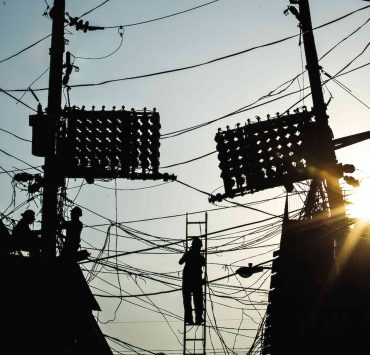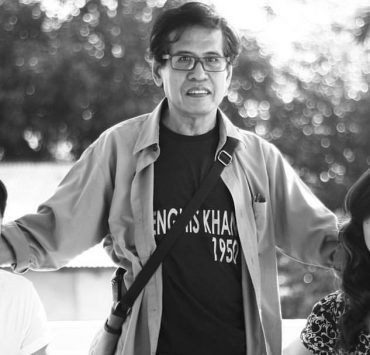The next batch of national leaders we choose on Monday should examine a decades-old law prohibiting the sale of ukay-ukay, a common reference to imported used clothing.
Crafted in 1966, the proponents of Republic Act No. 4653 intended it to “safeguard the health of the people and maintain the dignity of the nation” by creating a national policy prohibiting the “commercial importation of textile articles commonly known as used clothing and rags.”
The law, unamended despite the now obvious need, carries a penalty of imprisonment from two to five years and a fine between P200 to P20,000. Authorities are allowed to confiscate used clothing up for sale and destroy them.
Luisito Abueg, in his undergraduate thesis submitted to the University of the Philippines School of Economics, presented an exhaustive study that traced the history and prevalence of ukay-ukay in the country.
He said that despite the ban in 1966, a more or less steady stream of used clothing from other countries found their way to our shores disguised as donations.
Truth was, the used clothes were curated from rummage sales in more developed countries, stuffed in balikbayan boxes and sold for a fraction of their original price.
The succession of administrations that came after the law was enacted has been ambivalent toward ukay-ukay.
Observers a.k.a. ukay-ukay enthusiasts note that until the time of President Fidel Ramos in the 1990s, the sale of ukay-ukay was mostly limited to Baguio City. This was because many of the items were meant for the cold climates of the countries where they were sourced from.
Abueg said President Joseph Estrada later strengthened the policy against the sale of used clothing with the passage of an administrative order (AO) despite the plan of Vice President Gloria Arroyo, his social welfare secretary at the time, to endorse a suggestion promoting Baguio City as a tourist destination for ukay-ukay.
The same enthusiasts note that stores selling imported used clothing flourished especially in commercial areas in Metro Manila when Mrs. Arroyo became president despite the prohibition. Abueg noted that then social welfare secretary Dinky Soliman even reiterated Mr. Estrada’s AO.
Ukay-ukay is “detrimental to the economy?”
His research also showed that the Philippine government of the early 2000s thought it’s “detrimental to the growth and development of the national economy” if ukay-ukay is tolerated as it has “greatly affected local producers and firms involved in manufacturing, particularly the textiles, garments, and clothing subsector that contributes to the country’s Gross Domestic Product and Gross National Product.”
A change of heart occurred during when Benigno Aquino III became president.
His customs commissioner Angelito Alvarez in 2010 talked to Congress about legalizing the importation of used clothes. His rationale: legalization would curb smuggling and potentially collect an additional P700 million a year for the government.
His suggestion, however, earned hostile reviews particularly from Federation of Philippine Industries chair Jesus Arranza who warned in August 2011 that imported used clothing “may cause the spread of virus and diseases.”
Arranza further cautioned Commissioner Alvarez his ides “will just embolden the smugglers of ukay-ukay…(and) dissuade investments in the textile and garments industry that is now on the verge of collapse.”
(In recent news, resigned Davao City vice mayor Paolo Duterte, in denying his involvement in illegal drug smuggling, even pointed to his wife’s family’s ukay-ukay business as his minimal and only exposure to the Bureau of Customs where shabu supposedly passed through.)
Still, ukay-ukay stores remain ubiquitous in the country. Not only do they cater to various price points, but there are also non-profit organizations that point to ukay-ukay as a valuable resource for fabrics and designs that would skip the environmentally-destructive manufacturing process, more specifically of fast-fashion goods.
Fashion movement
Fashion Revolution Philippines, a movement pioneered in the UK, is now at the forefront of the campaign for the continuous repurposing of old clothes, whether foreign-sourced or not.

Country coordinator Sophia Calugay presented in late April the group’s proposal to amend R.A. No. 4653 by restricting the number of secondhand stores selling ukay-ukay and providing more control over the arrival of imported used clothing.
In a separate forum Sunday, panelists of the “Recirculation Revolution: Towards a Sustainable Fashion Industry” discussed current challenges that proponents of secondhand clothing face while espousing their advocacy.
Calugay, an erstwhile fast-fashion fan, related how her family believes it is “poverty mentality” to wear secondhand clothes.
“My mom insists I have money (for new clothes). But why would I let this beautiful dress end up in a landfill somewhere? People risk their lives to make clothes. And some people have this notion that used clothes are something disgusting, not socially acceptable and maybe from an older generation, or believing that the clothes carry diseases,” she said.
This prompted Bianca Holganza of Vintage Purveyor to note that it is “common sense to properly disinfect” all purchased clothes, whether old or new, “even with clothes straight from the factory.”
Calugay admits convincing her loved ones to change their minds remains “a process” but adds that learning about the environmental impact of the continuous manufacture of new clothes “is the reason why I am now hardcore” about lessening her carbon footprints.
Calugay said the synthetic fabric polyester, for example, releases toxic microfibers in the water each time it is washed.
This was the reason, she said, why she once refused to buy “cute” underwear on sale after checking its label and seeing it was 60% polyester. She had to settle for “boring” 100% cotton underwear later.
Calugay also referred to a “fashion food chain” where people continuously throw away clothes they don’t need or never use. “It really opened my mind. There are actually people who consume stuff just because they are stressed. This has a huge environment and social impact. We have one earth and limited resources.”
Labor-unfriendly
Hannah Thiesen of TELAStory, an organic textile manufacturer based in Binondo, Manila, said “part of being a responsible producer” is “teaching people to repair or alter what is they already have to curb consumption. I know we are a weird fashion brand because we’d rather that people don’t buy our shirts.”
Thiesen addressed another dark phase of fast-fashion: its horrendous regard for labor.
She said her insistence on fair wages for her local employees sometimes becomes a reason why potential customers are discouraged from transacting business. Those who place orders want to cut corners and would not mind leaving Thiesen’s employees with lesser pay for cheaper goods.
Thiesen maintains she wants to “still be a profitable brand and stay at how we are doing things.”

Irene Subang of the Institute of Creative Entrepreneurship suggested that fashion schools and other institutions related to creative businesses include courses that would incorporate fabric conservation and repurposing.
“Fabric is super expensive and I have seen students do away with one, two, three yards of fabric at P300 per yard. We must maximize the whole fabric instead of wasting it,” she said.
Jodinand Aguilon, owner of the Makati vintage shop Glorious Dias, called recirculation “a lifestyle” that should not be limited to clothing. Ice cream tubs, for example, can be reused as food containers. “This is nothing new,” he noted.
Aguilon credited his mother for instilling the early notion of vintage appreciation.
“My mom feared to show up at a party where someone wears a similar dress so she preferred vintage or pasadya (custom-made clothes). But when you repurpose old clothes, you challenge your own creativity…You have a tangible item with intangible meaning,” he said.

Why regulating ukay-ukay benefits the environment
While espousing creativity and conservation, Calugay’s Fashion Revolution Philippines has also found itself at the forefront of efforts to amend R.A. No. 4653 that bans ukay-ukay importation.
Allowing the legal entry of ukay-ukay in our ports has the potential to increase tax collection and raise funds for relevant government projects.
Wearing ukay-ukay clothes not only challenges creativity. It also disrupts the nasty chain of fashion consumption by averting the production of more new clothes.
Why should this be good news? Creatively repurposed old clothes leave lesser carbon footprints. New clothes mean using chemicals that pollute water resources, oftentimes slave labor and fossil fuel consumption to send these to consumers all over the world.
Aguilon said it well when he mentioned that current times call for changing our perspective on what old means. “Is it just luma or something we should rather forget?” he asked.
The ongoing stigma of wearing old clothes is fast becoming irrelevant. And preserving R.A. No. 4653 as a protectionist policy for local textile and garment manufacturers may not be the solution.
If we weigh things from this perspective, we have a specific local business on one hand and the environment on the other. Is this not the time we consumers, our next leaders, and our government become wiser?
Read more:
4 shops where you can buy upcycled clothes
Why you shouldn’t be ashamed of using second-hand items, VP’s daughter or not
Our clothes may be polluting the oceans. Just check its label
Writer: CATHY CAÑARES-YAMSUAN
ART MEL CHANG




